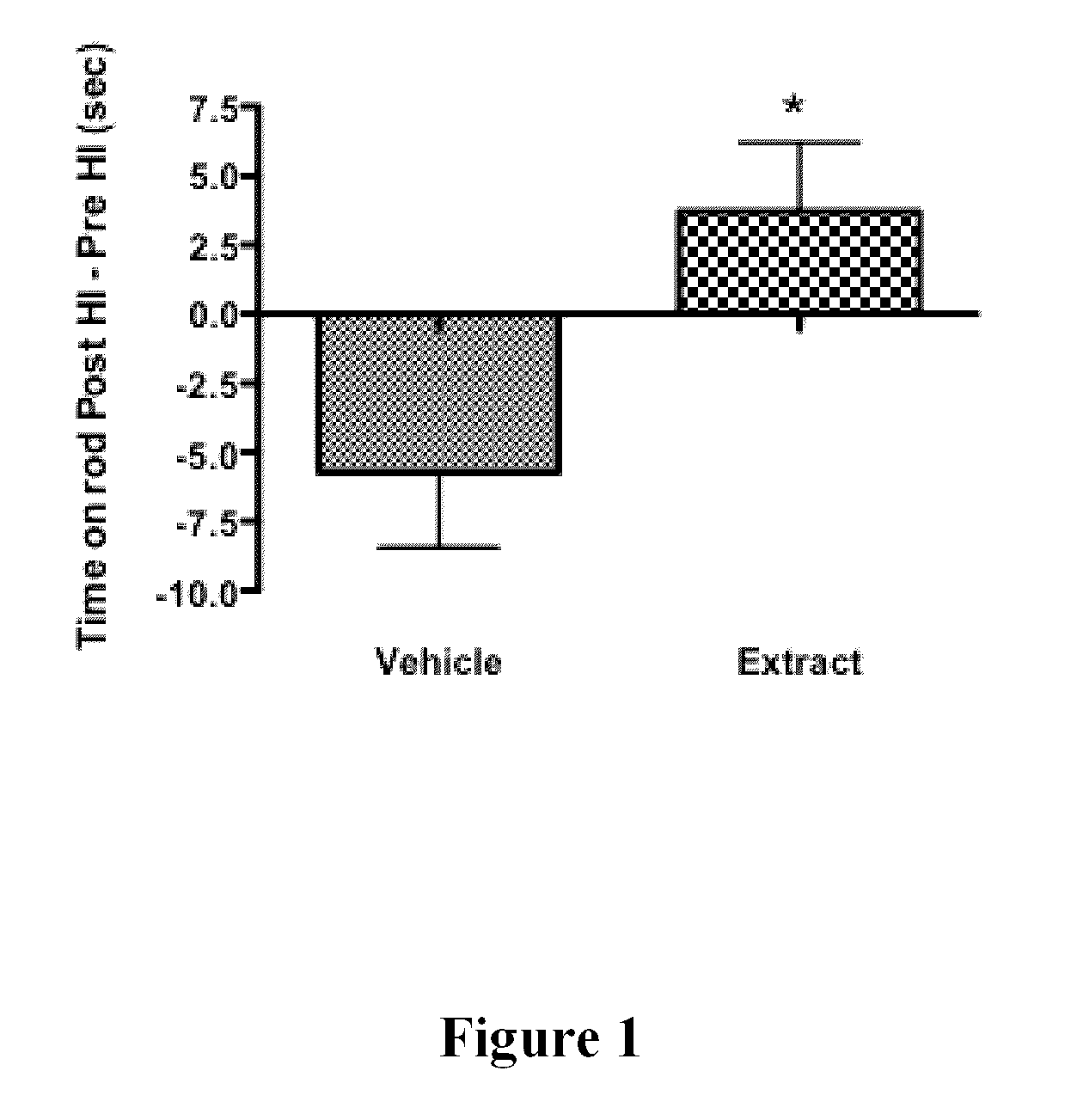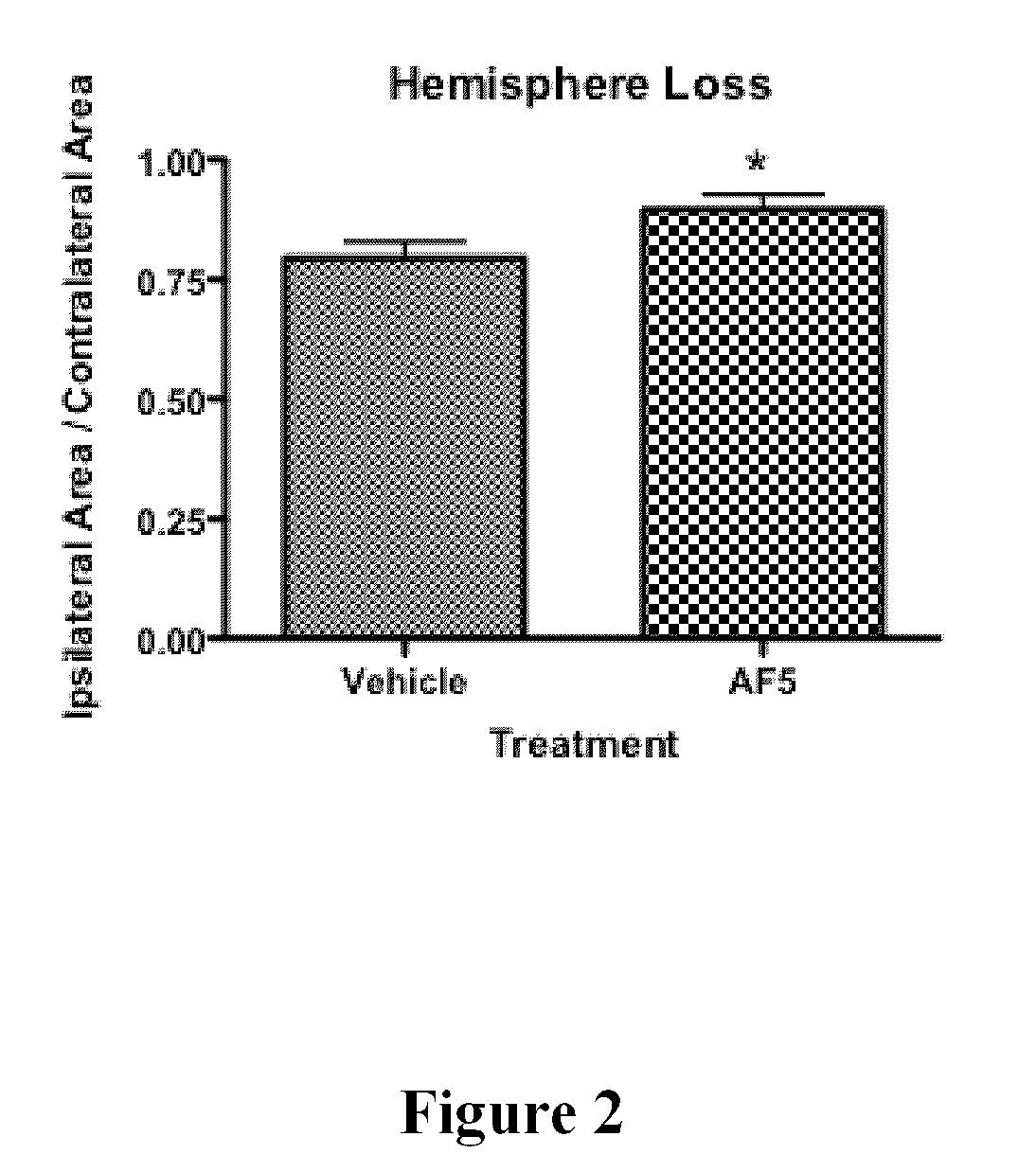Phenolic Compositions Derived From Apple Skin And Uses Thereof
- Summary
- Abstract
- Description
- Claims
- Application Information
AI Technical Summary
Benefits of technology
Problems solved by technology
Method used
Image
Examples
example 1
Preparation of Flavonoid-Rich Fractions of Apple Skin Extract
[0207]The apple skins of the apple cultivar, Northern Spy, were collected from a commercial pie manufacturer, Apple Valley Foods Inc., Kentville, NS, Canada. Immediately after peeling, the skins were treated with 2% CaCl2 in water (w / v) at 55±5° C. for 10 min to prevent degradation of phenolic compounds. After draining the excess water and within 3 h of the CaCl2 treatment, the apple skins were transported in plastic containers to the Nova Scotia Agricultural College (NSAC). The apple skins were dried in clean plastic trays at 60±2° C. for 48 h using a convection oven with air circulation (Milner Agincourt, ON, Canada). The dried skins were ground into a fine powder using a Willey mill with 1 mm sieve screen (Model Laboratory Heavy Duty, Arthur Thomas Co., Philadelphia, Pa.) and kept in a freezer (−80° C.) for later use. One hundred grams of apple skin powder was weighed into a 2 L flask and sonicated using 1 L of absolute...
example 2
Neuroprotective Effects of F5 in an Animal Model of Stroke
[0216]F5 Treatment
[0217]The neuroprotective potential of phenolic composition F5 (Table 2a) derived from apple peel was investigated in an hypoxia-ischemia (HI) model of brain injury. The total phenolic content of the fraction was measured, based on the phenolic compounds listed in Table 2a. The extract was administered to C57 / b16 mice (6-8 weeks old) by oral gavage for 3 consecutive days at a dose of 50 mg phenolics / kg body weight. Mice in a control group were given vehicle (water) at a volume of 0.01 ml / g body weight by oral gavage for 3 consecutive days. Twenty-four hours after the last dose of extract or vehicle, the mice were subjected to hypoxia-ischemia (HI).
[0218]A separate study had shown that a single dose (50 mg phenolics / kg) was not sufficient to significantly protect against damage caused by hypoxia-ischemia compared to vehicle treatment group (data not shown), suggesting that increased dosage or multiple treatme...
example 3
F4 Reduces Death of Primary Cortical Neurons Subjected to Oxygen Glucose Deprivation when Compared to Two F4 Components and Three F4 Metabolites
[0239]Methods
[0240]Lactate dehydrogenase is a stable cytosolic enzyme that is released by necrotic cells upon membrane damage. The membrane integrity of cortical neurons was assayed by measuring the release of lactate dehydrogenase (LDH) using the Cytotoxicity Detection KitPLUS (Roche Applied Science). This assay kit detects LDH released into culture supernates by a coupled enzymatic reaction. Positive (100% LDH release) and negative (spontaneous LDH release) controls were prepared in triplicate according to the manufacturer's instructions. Primary cortical neuron cultures were prepared from cerebral cortices of embryonic day 16 CD1 mouse embryos. Cortical neuron cultures were exposed to vehicle (0.1% dimethyl sulfoxide (DMSO)) or F4 at concentrations of 1, 0.1 or 0.01 μg / mL in serum-free conditions for a period of 12 h before they were subj...
PUM
| Property | Measurement | Unit |
|---|---|---|
| Fraction | aaaaa | aaaaa |
| Fraction | aaaaa | aaaaa |
| Fraction | aaaaa | aaaaa |
Abstract
Description
Claims
Application Information
 Login to View More
Login to View More - R&D Engineer
- R&D Manager
- IP Professional
- Industry Leading Data Capabilities
- Powerful AI technology
- Patent DNA Extraction
Browse by: Latest US Patents, China's latest patents, Technical Efficacy Thesaurus, Application Domain, Technology Topic, Popular Technical Reports.
© 2024 PatSnap. All rights reserved.Legal|Privacy policy|Modern Slavery Act Transparency Statement|Sitemap|About US| Contact US: help@patsnap.com










